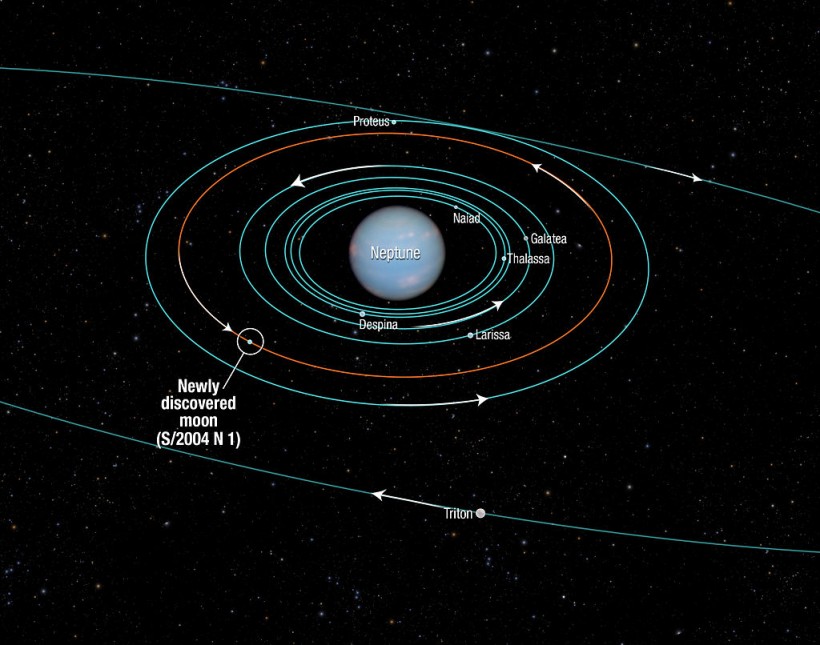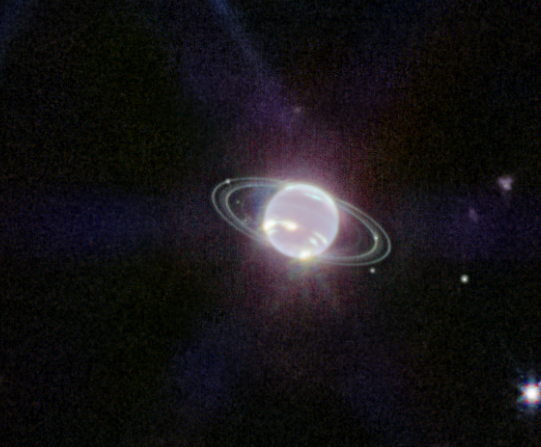The advanced NASA James Webb Space Telescope captured another stunning image. This time, JWST took a high-definition photo of Neptune's rings.

(Photo : Wikimedia Commons)
NASA James Webb Captures HD Neptune Ring Photo—Definitely Better Than Voyager 2's 1989 Image
The international aerospace union confirmed this achievement on Sept. 21.
It also posted the latest image of Neptune's rings via its official NASA Gov website.
"Not only has Webb captured the clearest view of this distant planet's rings in more than 30 years, but its cameras reveal the ice giant in a whole new light," said NASA.
NASA James Webb Captures HD Neptune Ring Photo
According to Science News' latest report, JWST's new image of Neptune shows the ice giant in a whole new look.

(Photo : Screenshot from NASA Gov's official website )
NASA James Webb Captures HD Neptune Ring Photo—Definitely Better Than Voyager 2's 1989 Image
Experts stated that the infrared image released by NASA is a huge improvement from the Neptune photo captured by the Voyager 2 back in 1989.
Neptune system expert Heidi Hammel said that it'd been three decades since the ice giant's faint, dusty rings were seen.
She added that the latest photo is the first one showing Neptune in infrared.
The advanced James Webb Space Telescope was able to capture this HD space photo, thanks to its extremely stable and precise image quality.
This allows JWST to detect the very faint rings of Neptune.
What Neptune Looks Like in JWST's Image
Based on the official space photo of NASA, Neptune appears to be a bright white object with rings around it.
If you saw other captured images of the James Webb Space Telescope, most of them appear in blue.
The international space agency explained that Neptune doesn't appear blue in JWST's image because of its strong methane gas.
This absorbs the red and infrared light, making Neptune look quite dark at near-infrared wavelengths.
Unlike Jupiter and Saturn, Neptune is a gas giant that is richer in elements heavier than helium and hydrogen.
Aside from Neptune, NASA's JWST is also one of the planet's known moons. If you look in the upper left corner of the image, you will see a quasar-like object.
However, it is not a star. Rather, this very bright object is the unusual moon of Neptune called Triton. You can also see other natural satellites of the gas giant, such as Despina, Proteus, Larissa, and Galatea.
You can click this link to see the actual image captured by the James Webb Space Telescope.
Recently, the NASA JWST captured a perfect shot of an "Einstein Ring."
Meanwhile, NASA's James Webb Space Telescope took the most detailed photo of the Orion Nebula.
For more news updates about JWST and its upcoming space images, keep your tabs open here at TechTimes.
Related Article: NASA's James Webb Space Telescope Experiences Technical Glitch, Halts On-Ground Observations
This article is owned by TechTimes
Written by Griffin Davis









